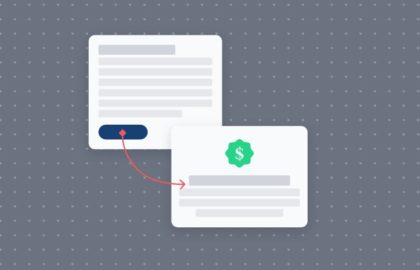We’re going to put the spoiler right out in the front here – no, you don’t need a degree to become a Product Designer.
But, that’s not the whole story.
While a formal college education isn’t required to enter the field, the skills taught in those degrees are critical. Now I can hear you saying “isn’t that contradictory?”, but hear me out.
Put quite simply, a traditional 4-year educational degree is not the only pathway for acquiring the necessary skills. In fact, you have at least three different avenues: traditional 4-year, self-taught, or an accelerated bootcamp program.
So, better questions to ask are “Which skills do I need to get my first job as a professional Product Designer?” and “How do I get those skills in the most time and cost-effective way?”
Important Skills For Skills Product Designers
Skill #1 – Design Fundamentals
Probably given away by the fact that “fundamentals” is in the name, the design fundamentals boil down to thinking like a designer. They typically entrail understanding the universal design principles, thinking in a user-centric methodology, and the development of a “designer’s eye.”
This is what you build style, brand, and strategy on top of.
Skill #2 – Design Tools
According to research by Adobe1, 42% of hiring managers report that familiarity with design tools is the most important skill they look for in a prospective new hire.
If you’re deciding which tool to learn first, we recommend starting with one that will help you visualize your ideas and design concepts such as Sketch, Adobe, Figma, and Maze.
Related reading: Here’s our Design Director’s guide to creating a wireframe in Figma
Skill #3 – Communication and Teamwork
We can’t all be the misunderstood geniuses of the world that doesn’t play well with others. In the career world, knowing how to communicate effectively and work on a team is critical to a successful and long career.
Learn to take feedback well, implement constructive criticism, and work with others in preparation for future relationships with clients and coworkers.
Skill #4 – A Standout Portfolio
Yes, this is a skill. It’s easy to throw together a substandard portfolio that will quickly relegate your application to the dustbin. It’s far harder to painstakingly craft a portfolio that will get you noticed.
Should you enroll in a bootcamp, you’ll likely graduate with a portfolio filled with quality projects that have been winnowed down by review after review until only the best remain. Career service teams will also give you tips on how to build the best portfolio possible to get you hired faster.
Whether you attend a bootcamp or not, it’s also a good idea to develop some “real world” design experience in preparation for applying to industry jobs.
Volunteer your skills to non-profits, small businesses, and community organizations, or advertise your services on freelancing sites like Upwork or Fiverr. These experiences will improve your application, improve your design skills, and set your application apart from the competition.
Related reading: Here’s our guide to building a portfolio that will get you noticed.
Skill #5 – Networking
Unfortunately, the old adage of “it’s who you know”, is quite true in the modern world of work.
Networking connects you to the hidden job market (i.e., jobs that are never formally posted and are filled primarily through referrals). Build this skill, expand your network, and you’ll see doors you didn’t even know existed opening for you.
Related reading: Networking Tips (For People Who Hate Networking)
Educational Avenues
So back to the title of this article – do you need a degree to be a Product Designer? (TL, DR – No!)
But in order to obtain the necessary skills to enter the field, there are typically three pathways available to you: getting a traditional degree, being self-taught, or enrolling in a training program.
Traditional university education
Now we’ve already established that you don’t need a degree to break into this field, but that doesn’t mean that they aren’t a good choice for some. The structure provided by traditional institutions can be very helpful and provide on-campus networking opportunities.
The downside to these conventional degrees however is that they are time-intensive (often 2-4 years minimum) and prohibitively expensive for many.
Self-taught
A self-taught approach, while significantly cheaper, lacks accountability and guided learning that can be vital to maintaining velocity towards your goal.
For those with the persistence and consistency needed to find success in this avenue, this avenue can be freeing, allowing them to take their time working towards industry skills. But, there are many more would-be designers that lose momentum and never feel “ready” to take the next step into the industry.
Accelerated bootcamp courses
Training programs and bootcamps on the other hand – at the risk of sounding cliche – combine the best of both worlds.
They are often an economical choice when considering total ROI (return on investment), establish a course to follow, teach practical skills, hold students accountable for progress, and provide guidance throughout.
Some courses, such as this one in UX / UI Product Design, even provide post-graduation career coaching to help new graduates find their first job.
Not sure if a UX / UI Product Design bootcamp is worth the investment? Here’s how to know if it’s right for you.
What’s more, an accelerated bootcamp can have you industry-ready and applying to jobs in less than 15 weeks. For students looking to change careers, a less than 4-month commitment can turbocharge their path into a new industry.
Breaking Into The Field
Beginning a new career as a UX / UI Product Designer won’t be easy, but it is incredibly rewarding. While it will take time, practice, and patience, Flatiron School is here to help prepare you.
Apply Today to take the first step on your path to a new career.
If you’re not quite ready to apply, try out the curriculum with our Free Product Design Prep or check out the Product Design Course Syllabus that will set you up for success.




